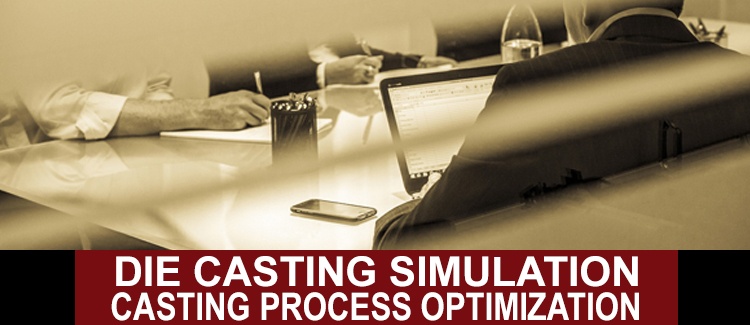As winner of numerous international awards, Bruschi Spa is known for its innovative approach in design and technology. We are glad to share our insights and experiences with the industry members.
Die Casting Simulation: A Casting Process Optimization
Nowadays using technology software such as die casting simulation allows optimizing the whole production cycle. Today’s ever-changing international marketplace is highly demanding and challenging: using the newest tools from supplier side mean giving clients innovative solutions to reach their expectations. The following article will explain how to obtain consistent savings with die casting simulation.
New goals and targets are constantly shifting to respond to market trends. It is essential to leverage multiple disciplines and competencies in order to be able to reach the global customers’ casting product expectations and manufacturing needs.
How Die Casting Simulation can lead to Savings
A smart casting process optimization requires flexible variables, with the ability to update information and data in order to adapt to the changing business environment.
Each team involved in the process must collaborate with other teams in order to identify and develop cost-effective, innovative, and simple to use methodologies; therefore, innovative thinking and creativity should be encouraged in order to facilitate solutions for difficult manufacturing situations.
Let’s now dive into die casting simulation issues.
The importance of the collaboration between suppliers and customers
When a supplier works closely with its customer and viceversa, each component of the process can be optimized to perfection:
- product or component co-design- die casting simulation
- tooling
- manufacturing processes
- mould design
- complementary works
- shipment procedures
Such collaboration guarantees great results in terms of high quality production and cost optimization.
If the customer aims at getting better products at lower costs, the manufacturer needs to be selected carefully and involved early enough in the process to enable collaboration not only in the design, but also in the entire decision making process.
A joint effort between suppliers and customers is a win-win solution to meet the market needs.
This can be true for several fields, but in particular concern Zinc Die Casting. From design to finishing there are many variables to manage, therefore a good process design is crucial to reach product integrity and quality.
In fact die casting simulation is therefore a fundamental stage to ensure best results in the most efficient way possible.
In this post is underlined the first phase of product or component co-design from the angle of die casting simulation.
Die casting simulation allow the designer to foresee with a good precision all material reactions inside the mould cavity among a thermos-fluid dynamic analysis of the mould. This kind of analysis is called CFD simulation (Computational Fluid Dynamics).
Concerning mould temperature, using this kind of software, is possible to identify possible defects such as cold laps and hot spots, and is possible to simulate temperature exchanges during the solidification phase and mould opening.
Numerical steps, in this particular phase, are fundamental. For this reason is necessary to start with die casting simulation that can help specialists to identify the best mould design parameters since the very beginning, obtaining an important cost reduction.
A proactive approach of designer can avoid and anticipate problems such as flow marks and blisters, cold laps, porosity, shrinkage porosity, lakes, and shot to shot inconsistency.
It is important to say that simulation allows to identify the correct balance between speed and temperature and geometry of overflows and runners in order to prevent any issue or defects in high pressure die casting.
Tools for casting process optimization
There are several applications available nowadays to maximize both the profit margin and the quality of the casting process: the use of die casting simulation software improves the collaboration among designers and engineering team, ensuring that all components leaving the development department are suitable for casting and can be manufactured in an economical process.
This kind of technology offers a virtual version of the casting process from filling to solidification and porosity prediction, in order to obtain reliable and high-quality products avoiding the costs of trials and the production of expensive moulds or patterns.
The die casting simulation examines mould filling, solidification and cooling, therefore residual stresses and distortion, as well as microstructure formation and property distributions can be assessed.
Within the main benefits of simulation in die casting you can include:
- Avoiding defects that arise from gas porosity, shrinkage, turbulence, etc.
- Filling process optimization to provide a fast but smooth and controlled flow
- Time savings thanks to efficient gate design and sizing
- Material cost and waste reduction
- Reduction of cycle times and maintenance costs
- Minimization of start-up costs through modifications to patterns or tooling
- Improved communication within suppliers and customers
Having a comprehensive and effective simulation tool enables the implementation of smart processes and optimized casting layouts.
To get the latest updates regarding Zinc Die Casting Industry, subscribe to our blog; and if you have any comments or questions, please feel free to fill in the form here below.


